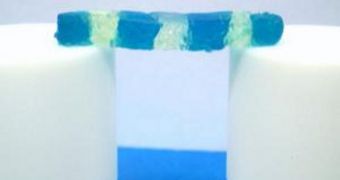Japanese researchers at the Tokyo University announce the creation of a new type of hydrogel, which is made entirely out of water and clay. The innovation is at this point strong enough to support its own structure, but its creators reveal that future innovations could see it become even more resistant. In fact, they add, it could be that, in just a few years, this material will replace plastics derived from environmentally damaging fossil fuels such as oil. The thing about the new hydrogel is that it's made up of about 98 percent water, which makes it incredibly “green,” NewScientist reports.
The research team was led by TU expert Takuzo Aida. The scientists mixed together about 100 grams of water and a few grams of clay, and then added sodium polyacrylate (a thickening agent) and an organic “molecular glue.” The entire mixture proved to be extremely resistant, much more so than the researchers themselves expected. It is transparent, and made mostly of water, but it's already able to support its own weight, which means that, in the near future, it could be made in such a way that it supports other weights as well. The end goal for the Japanese team is to produce a replacement for plastic, one of the most widespread materials today, and the basis for many of our technologies.
The hydrogel is also elastic, the team notes. As evident in this image, it can span a gap of about 3.5 centimeters without breaking under its own stress. The thickening agent plays a very important part in this ability. It separates the clay molecules into very thin sheets, which then trap the water molecules between them. The layers are held together by supramolecular forces, which are the representation of the sum of forces acting between the clay and the glue molecules. Unlike other hydrogels, which are based on covalent bonds, supramolecular force-based ones can regain their strength after being deformed.
Aida adds that the entire mixture takes about three minutes to be produced, and also that it requires no prior chemical training. This is of tremendous use for those thinking to market products based on the gel, once they become available. “One of the primary breakthroughs is the overall simplicity of the procedure coupled with the exceptional physical properties of the final assemblies,” University of California in Santa Barbara (UCSB) scientist Craig Hawker, who has not been involved in the new investigation, says. “Toughness, self-healing and robustness are just some of the initial physical properties that will be found for this new class of materials. I predict that this approach will lead to the design of even more impressive materials in the near future,” he concludes.

 14 DAY TRIAL //
14 DAY TRIAL //